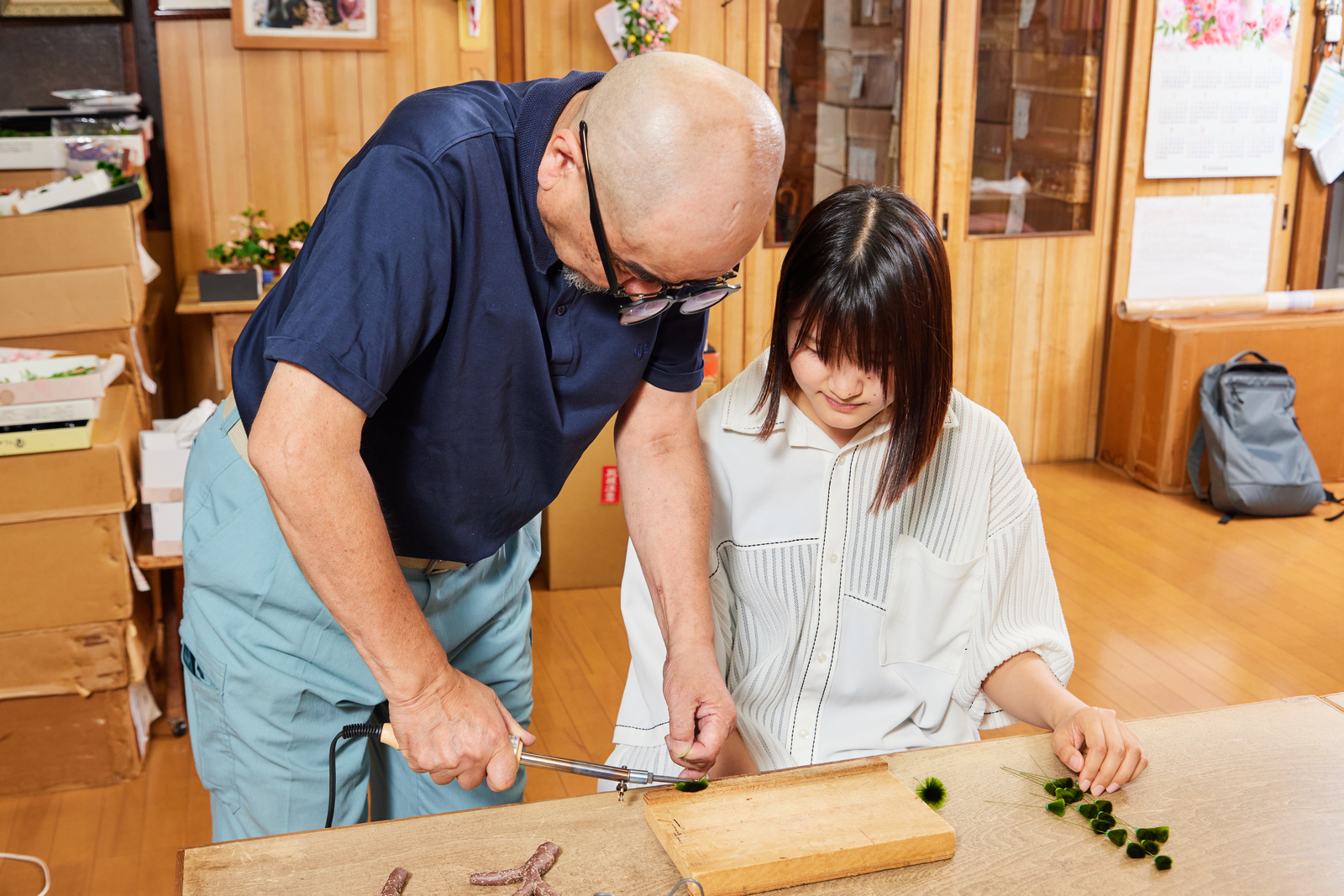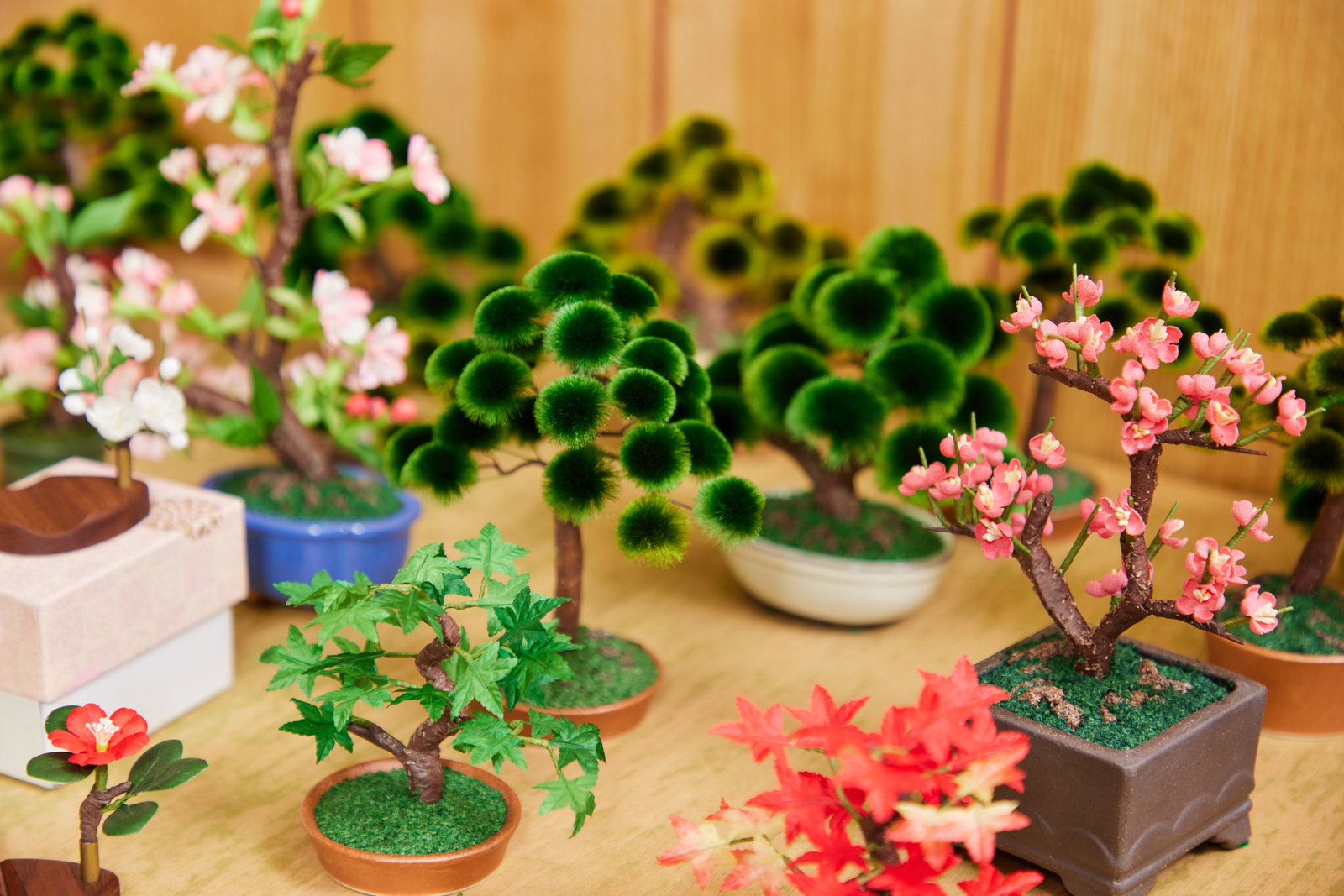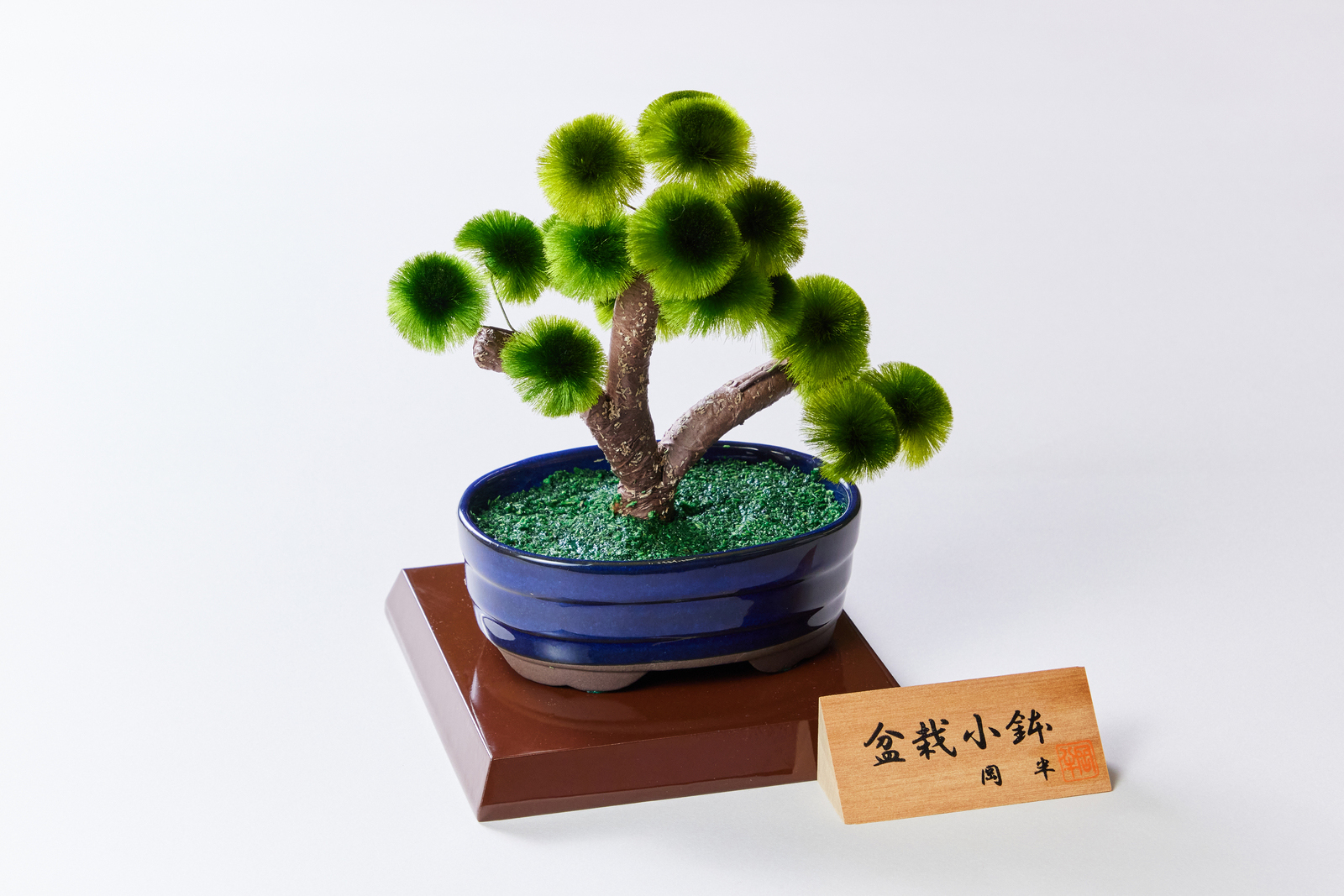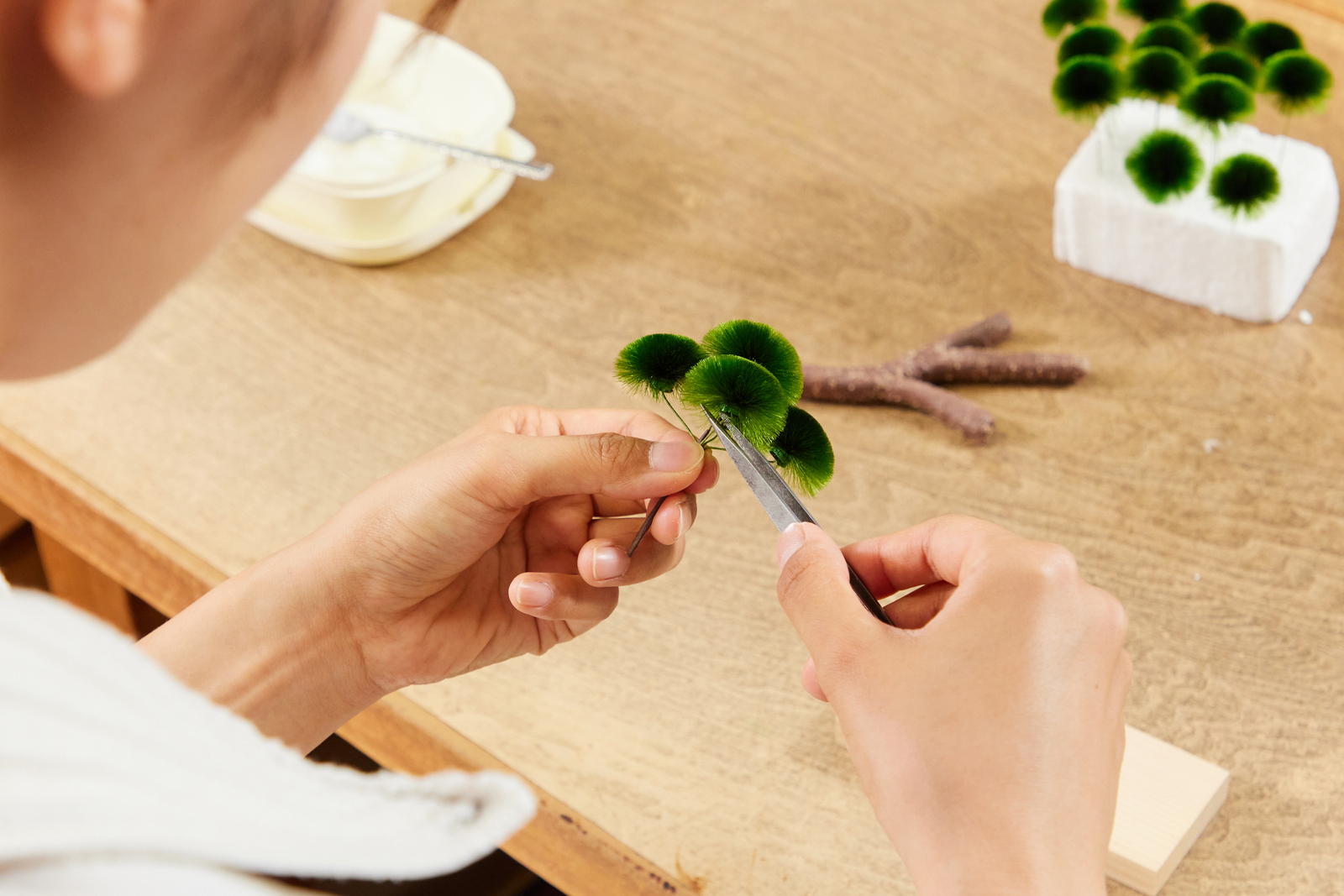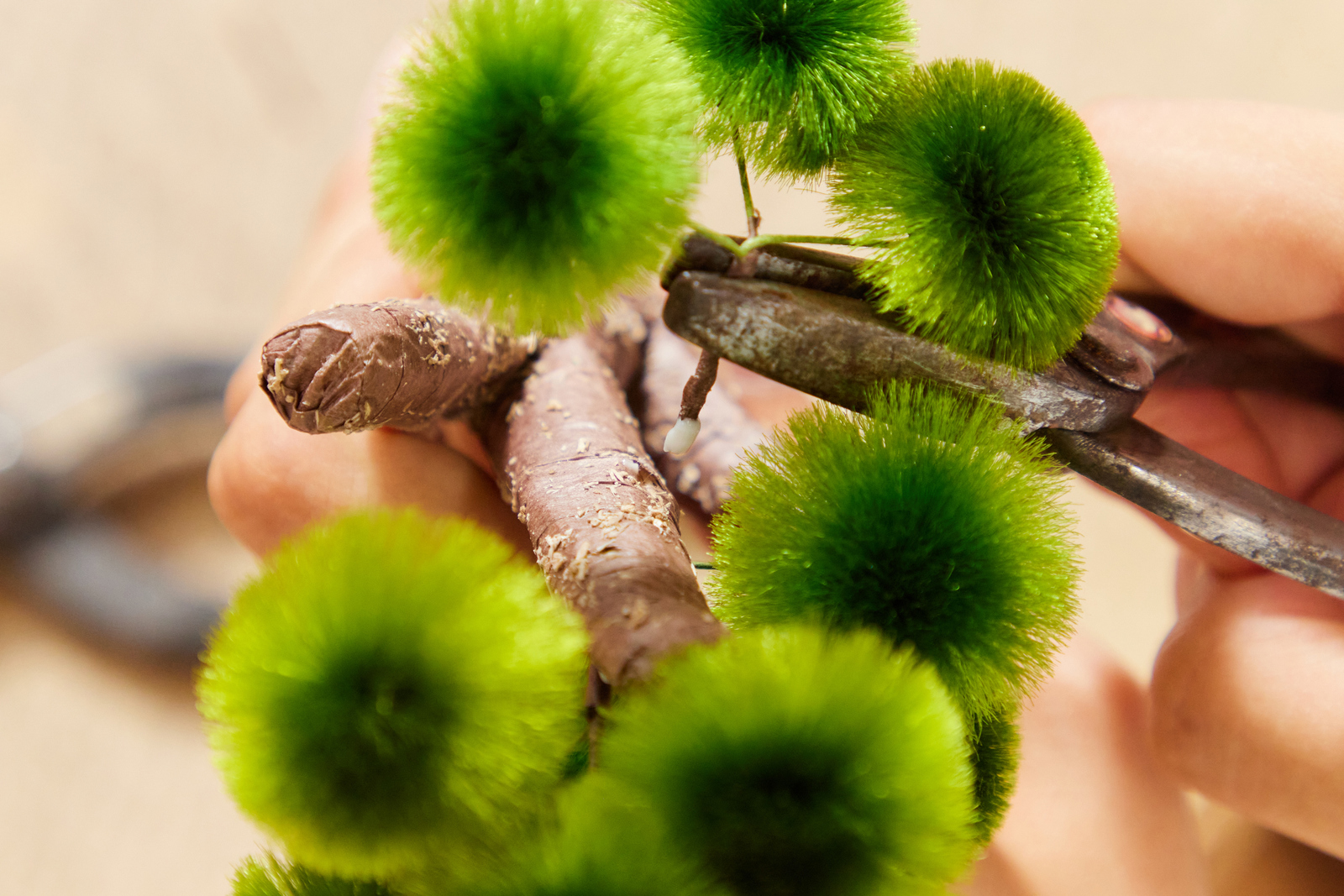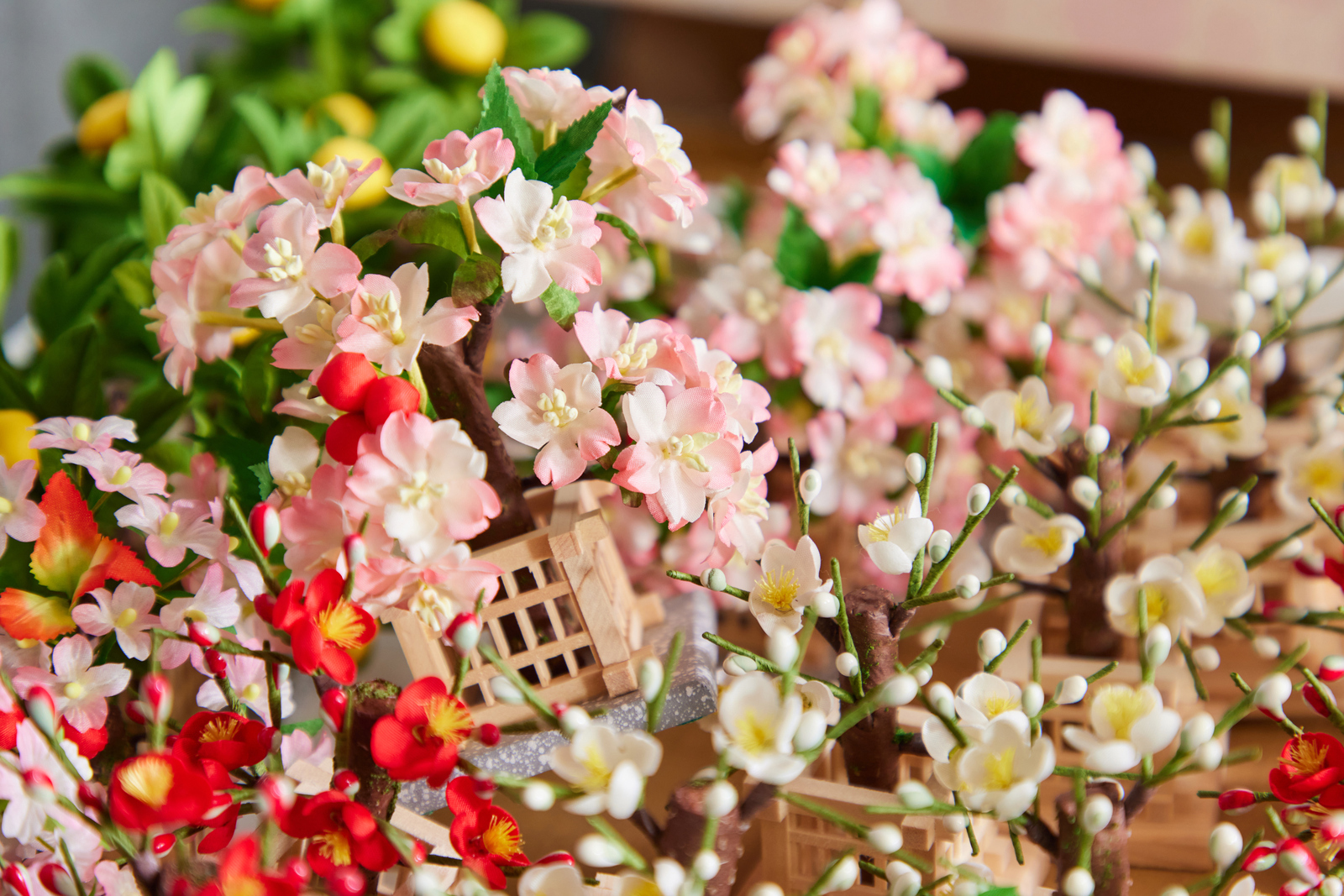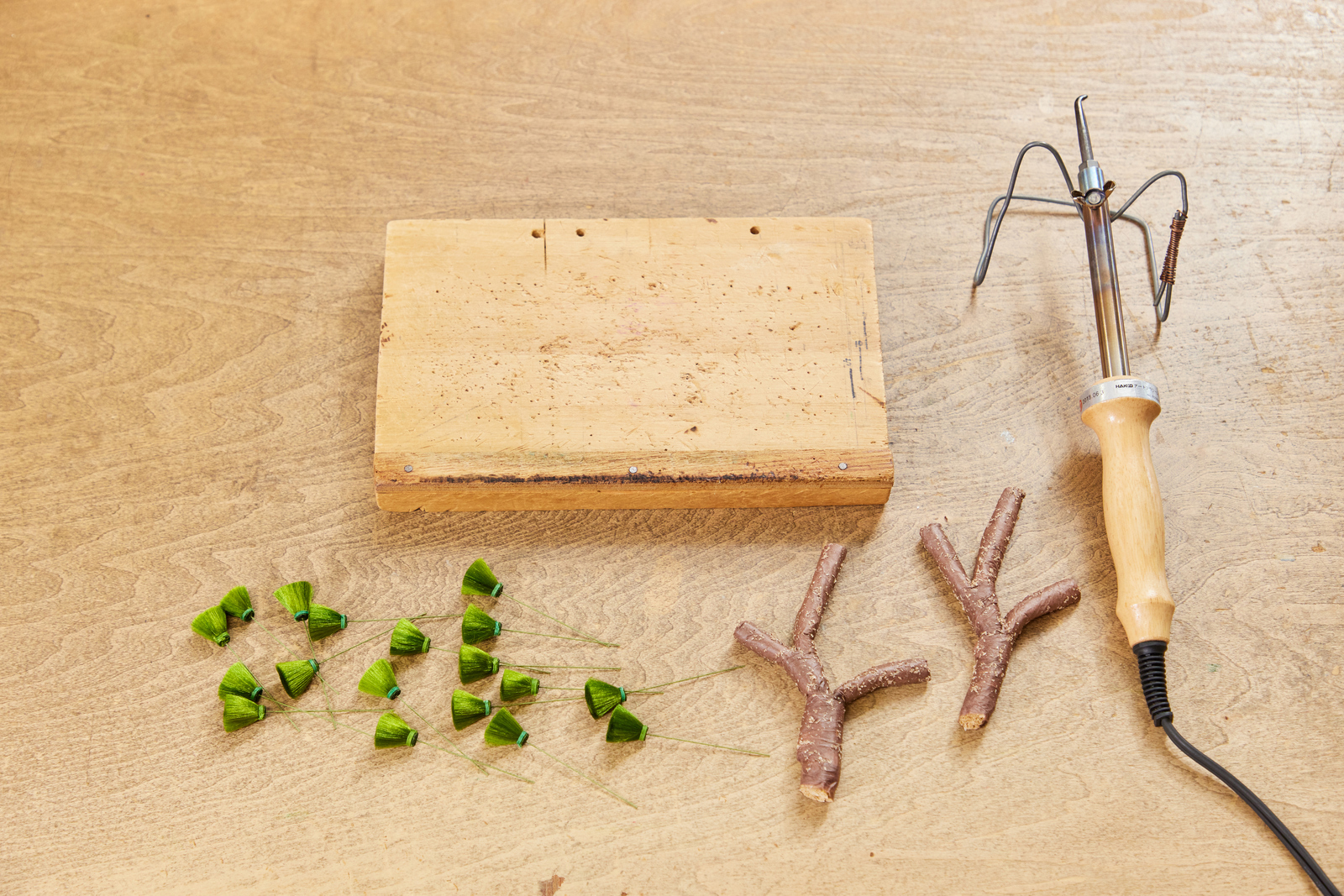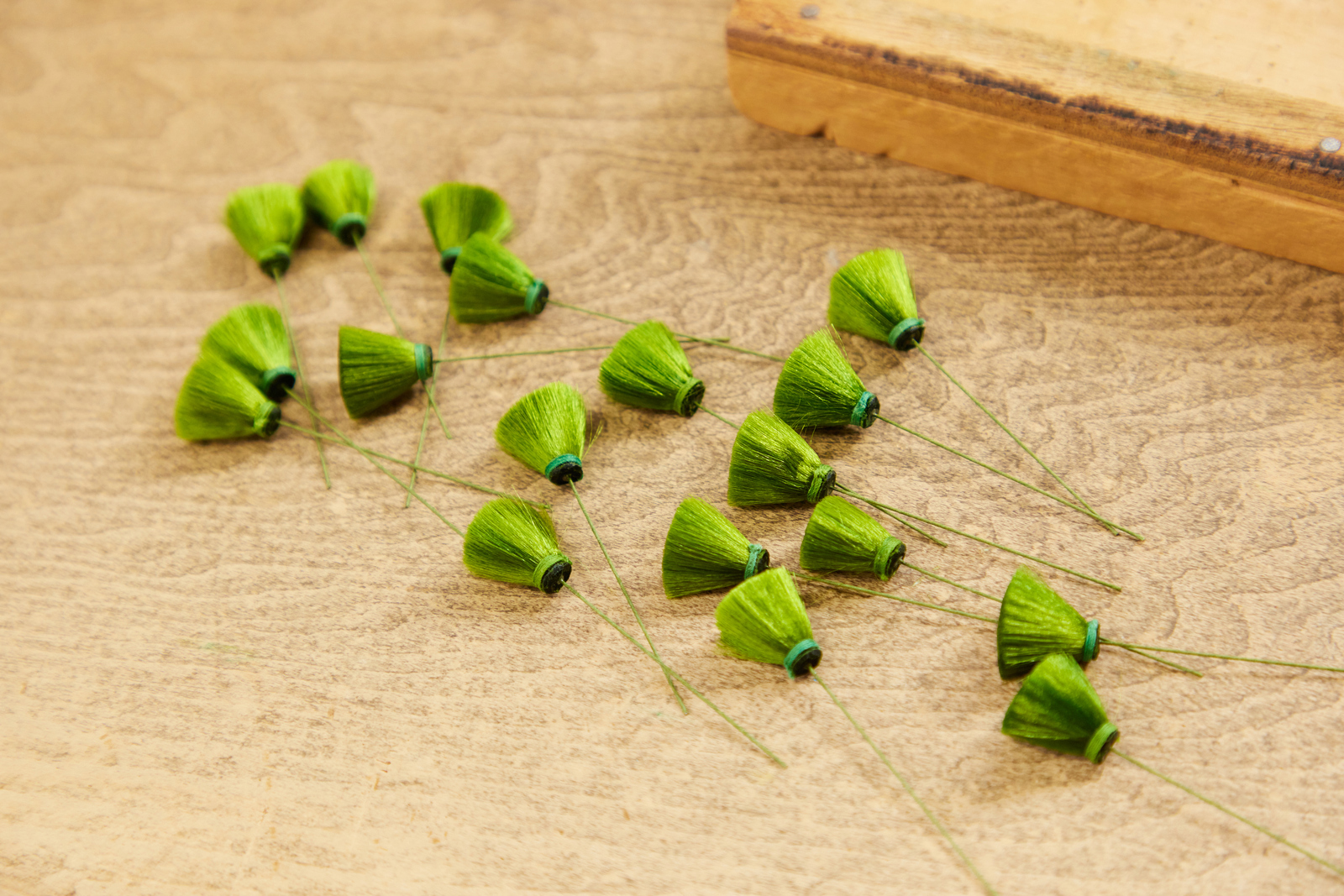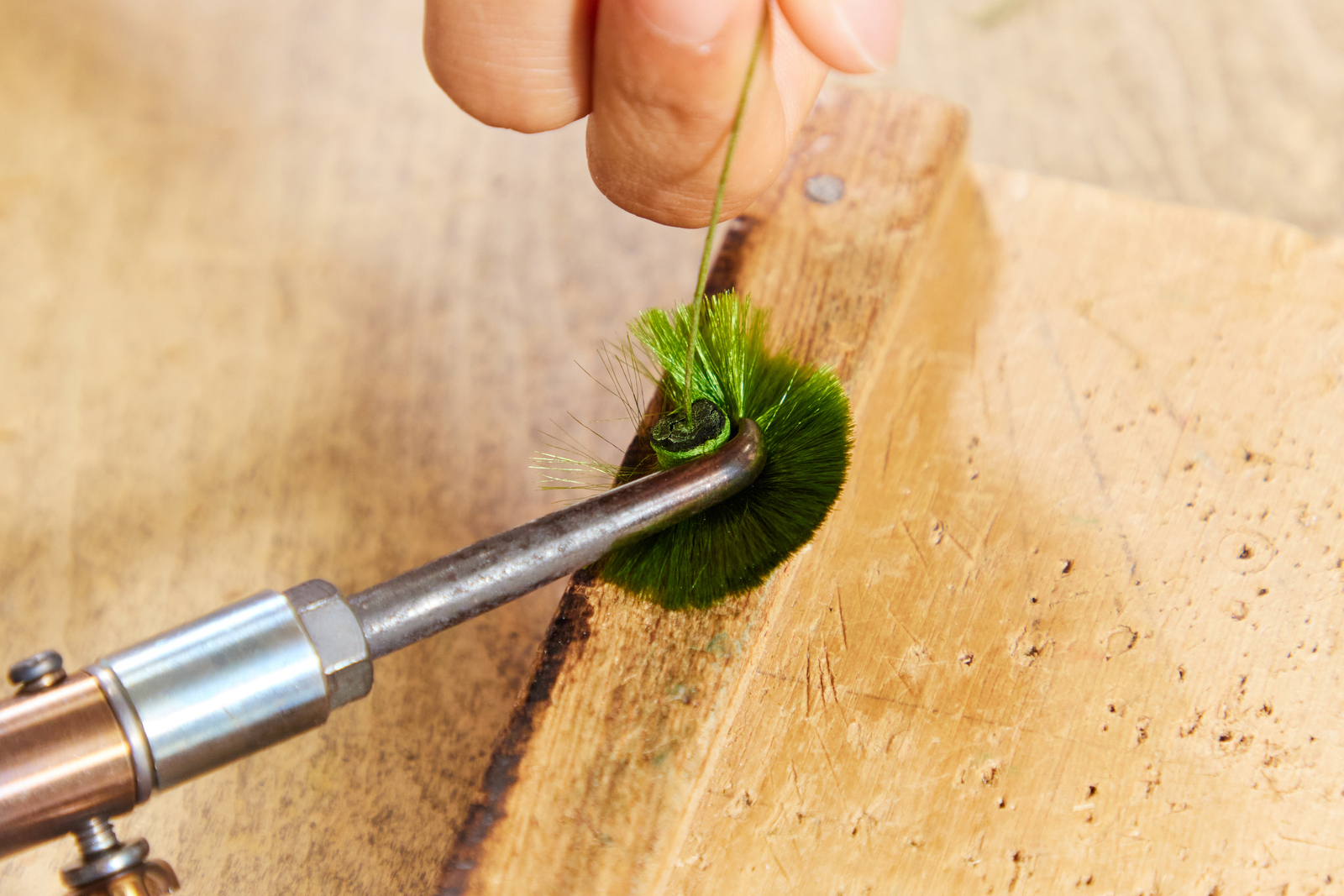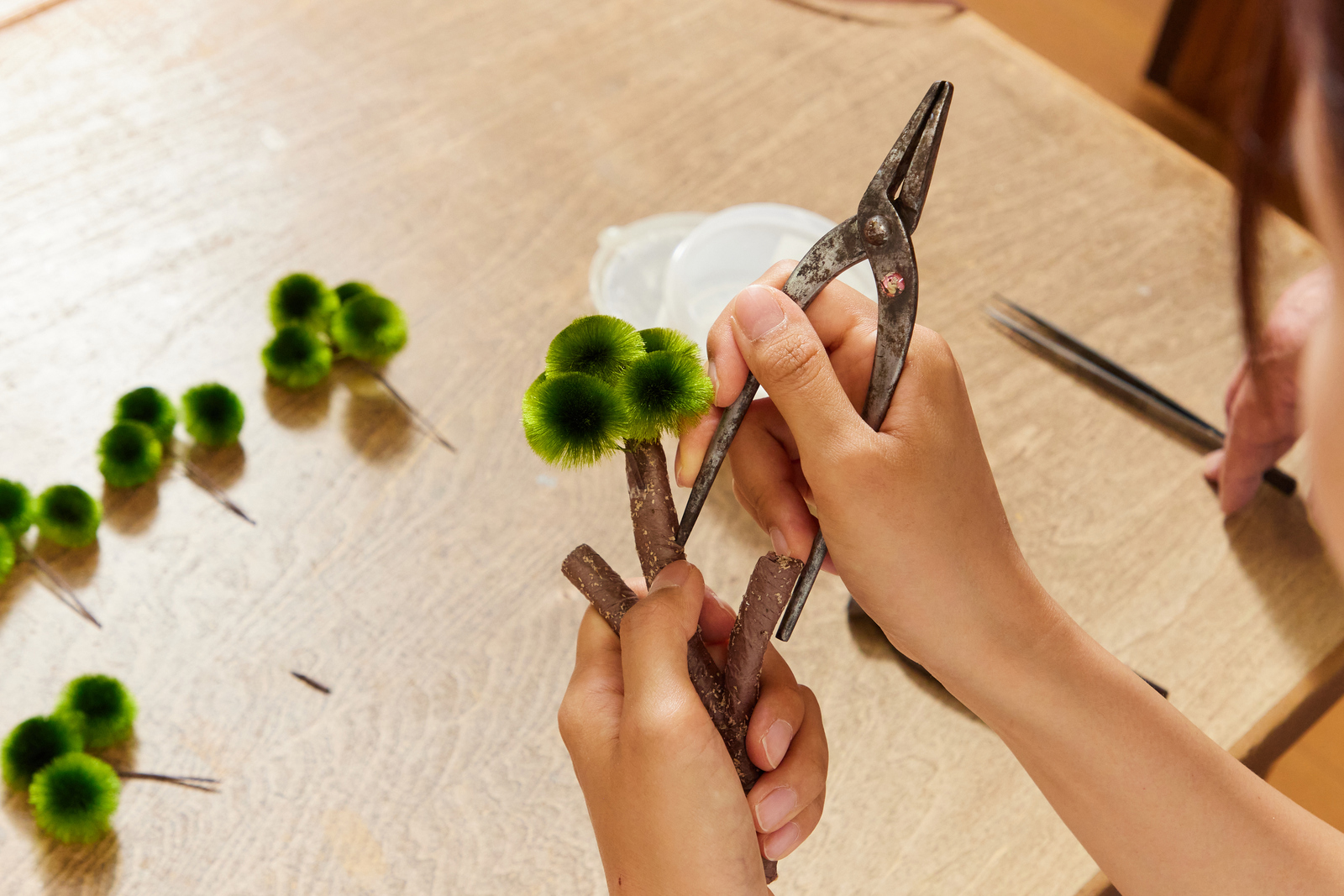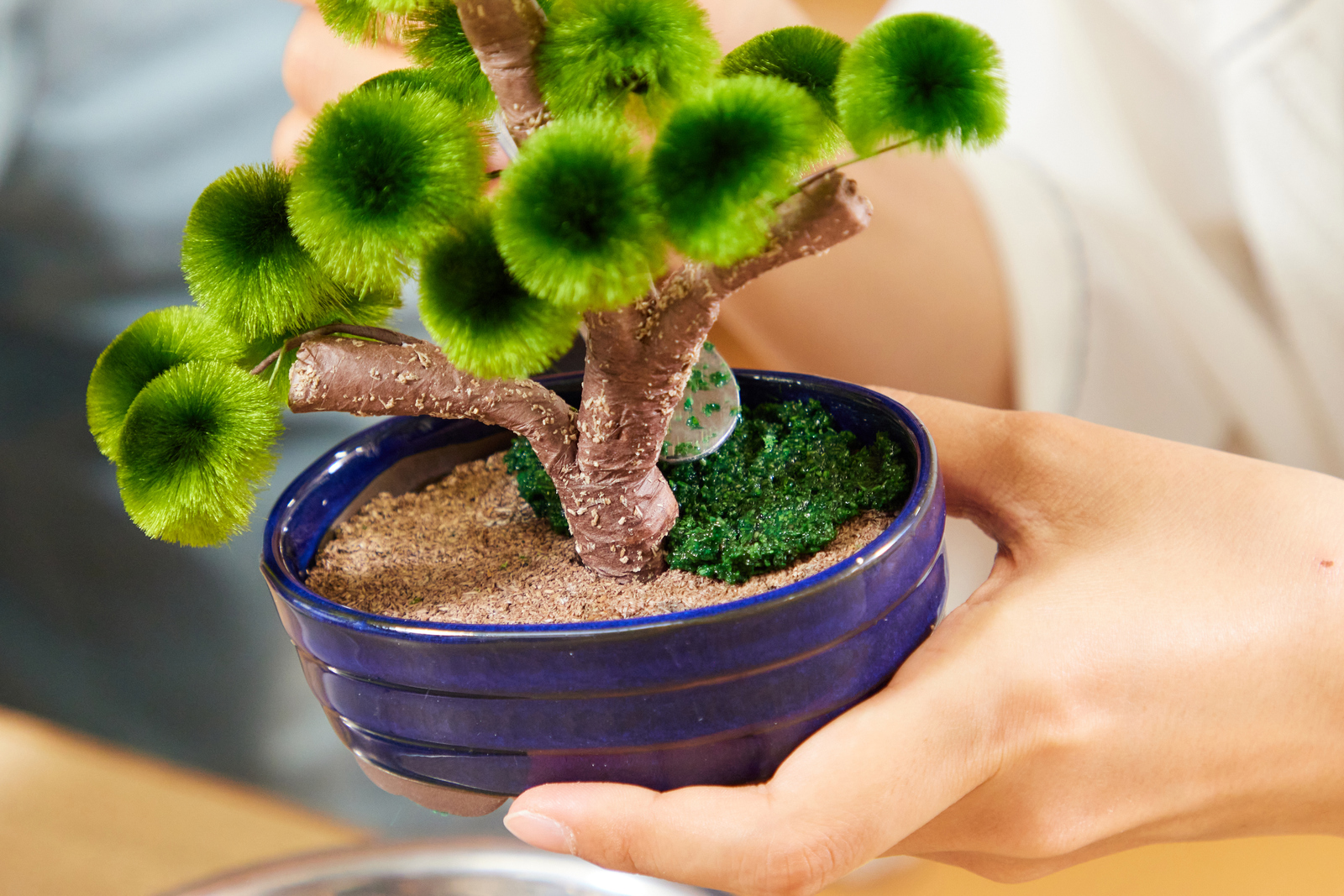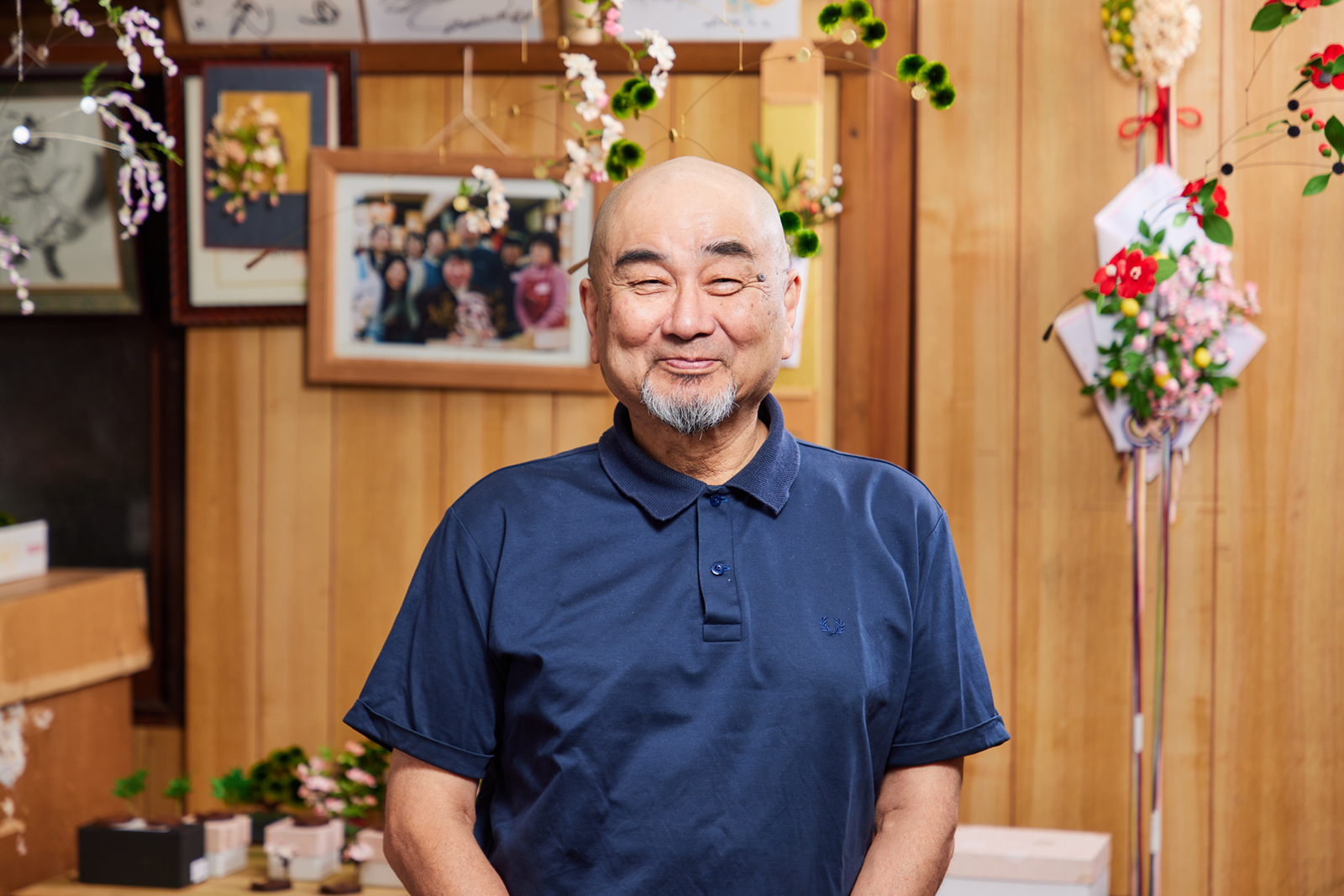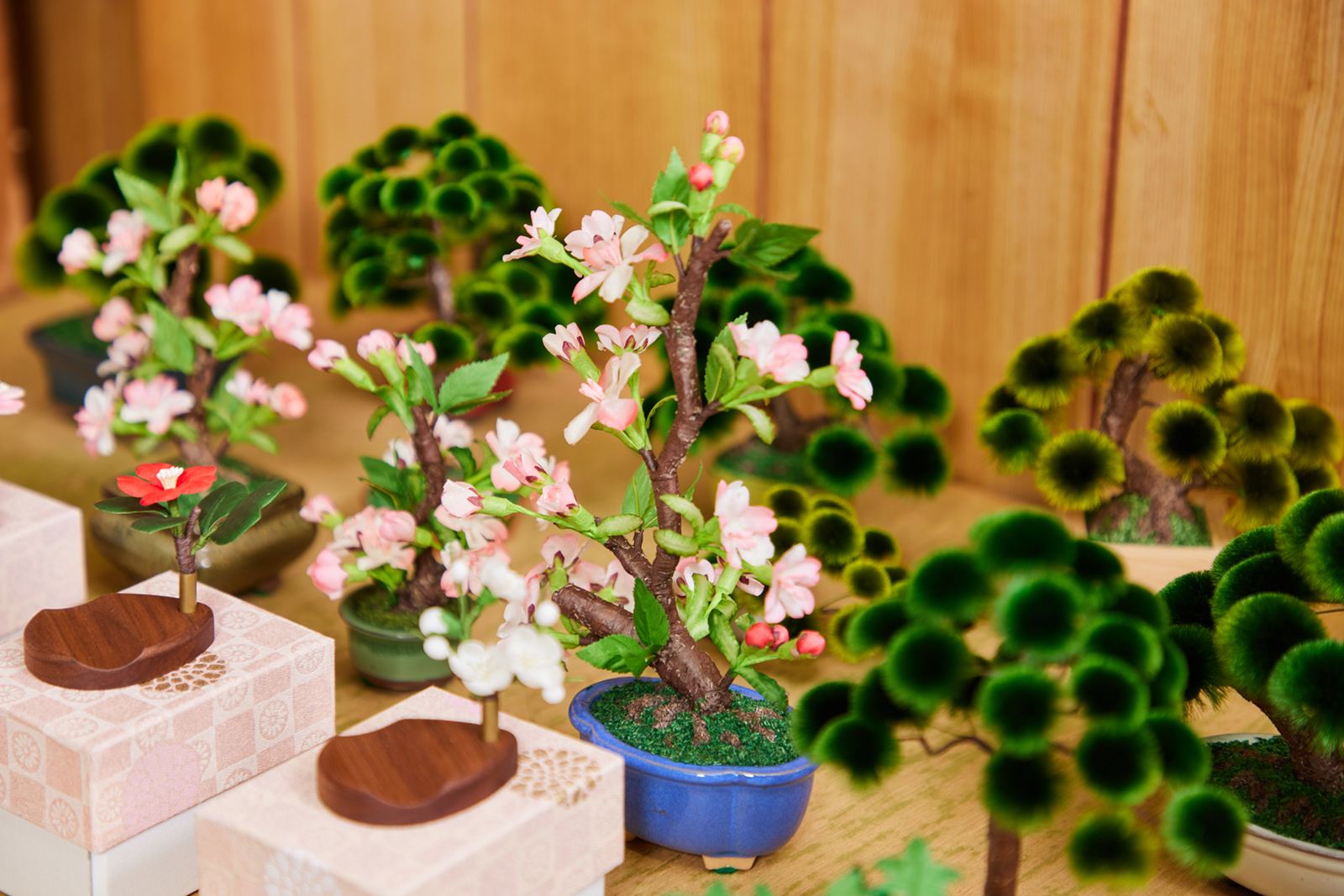Artificial flower-making to decorate beautiful dolls of seasonal festivals
Since ancient times in Japan, seasonal festivals such as Hinamatsuri (Girl’s Day) and Children's Day have been celebrated with displays of traditional dolls. Such dolls have been highly regarded both as protective talismans imbued with prayers, as well as decorations to make these occasions more festive. Artificial flowers designed to look like seasonal blooms are always included along with them in their displays.
Okahan was founded in 1922. Mr.Hanzo Okada, the founder, first apprenticed at a sandal thong shop at age 15, then at an artificial flower shop at 19. He went independent at the age 25 when he opened his own workshop in Asakusa. Demand for artificial flowers used in festival decorations and popular Kabuki-themed doll props was so high at the time that items would fly off the shelves as soon as they were made.
Following the 1923 Great Kanto Earthquake, he relocated to Urawa City (now Saitama City), Saitama Prefecture, where relatives lived, and continued creating artificial flowers for dolls. There he established a fully manual production process for artificial flowers, including dyeing the fabric and Washi paper, cutting it, and assembling the flowers by hand. Still today, Mr. Yuji Okada, the third-generation artisan, faithfully preserves these traditional techniques.
A miniature Bonsai created using traditional techniques
The experience starts with a tour of the workshop where we follow the process of how ordinary fabric and thread are transformed into the shape of flowers. The soft curve of the fabric petals make them look like they were just picked, and the vivid appearance of the artificial flowers gives them a fresh vitality.
For the workshop part of the experience, you’ll create a "Bonsai Kobachi," a miniature artificial pine tree in a little pot. Pine trees are considered a symbol of longevity and eternal youth, and pine is also used as a good-luck ornament accompanying Takasago dolls, which are given as gifts to wish for marital harmony and long life. Okahan applies the traditional techniques used for Takasago dolls to create miniature pine Bonsai, which are great for interior decor.
Using a special crafting iron to fan out the pine needles
After choosing a pot to hold the finished product, you’ll create the pine needle tufts that will be the main feature of the Bonsai. These are fluffy and are made from bundles of rayon thread. Try to imagine how thin threads can transform into a rounded tuft of pine needles.
You set to work making them while following the artisan’s demonstration. While applying the special artificial flower crafting iron to the base, you’ll carefully fan the threads outward. Since rayon is easily deformed by heat, you have to be super careful not to keep the hot iron on it for a long time. Press the iron quickly and firmly to fan the threading outward.
A total of 18 pine needle tufts are needed for your small Bonsai pot. After two or three tufts, you’ll probably start feeling more confident using the crafting iron.
The needles fanned out across the main branches radiates presence.
Once the 18 pine needle tufts are complete, you insert them into the trunk and branches, which are made of straw. The form your Bonsai takes as a work of art will be determined by the balance of these pine needle tufts. Five are placed on the top branch, and four on the main spreading branches. You put the remaining nine in various spots,
maybe seeking balance, or maybe placing them here and there. With this step you can express yourself as you wish.
Once all the pine needle tufts have been inserted, you place the Bonsai into the pot. Finally, you apply moss made from wood chips to complete your piece. There won’t be another potted Bonsai like the one you create anywhere in the world. Every time you look at your pine tree on your desk at home, you’ll remember the feeling of watching the needles change with each touch of the iron, and the excitement you felt creating something with your own flair.
Hoping people experience the warmth of artificial flowers and plant arrangements that gently add color to their daily life
“We’re still keeping tradition alive, working hard at making artificial flowers. We want people to understand how such flowers found in daily life in Japan are made, while learning to love items made by hand,” says Mr.Yuji Okada, the third generation proprietor. Come experience the spirit of the craftsmen who maintain the tradition of creating artificial flowers, quietly adding color to daily life.
Founded in 1922 in Asakusa, Tokyo. Following the Great Kanto Earthquake, the company moved to Urawa City (now Saitama City), Saitama Prefecture where it began making artificial flowers to be adorned together with dolls of seasonal festivals. More recently, alongside artificial decorations for ceremonies at temples and shrines, they have begun offering modern products such as miniature potted Bonsai trees and single-flower chopstick rests, sharing the appeal of artificial flower and plant arrangements in Japan and around the world.
